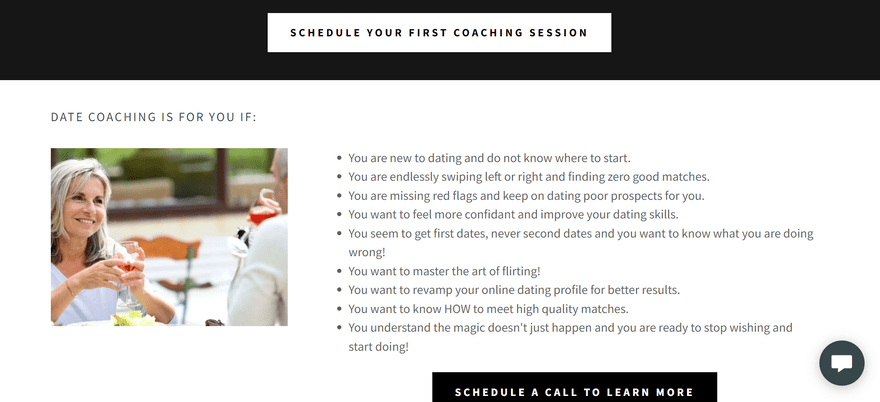No matter how much conversion rate optimization you do, are you tired of those potential customers who browse your store and then do a virtual U-turn, abandoning their cart at checkout? You’re not the only one! If you’re wondering about the average cart and checkout abandonment rate statistic, according to the Baymard Institute study it’s 70%! Yep, you read that right. This is where abandoned cart recovery strategies are so important, as a way to re-engage those lost customers.
But first, you need to understand the stats and reasons behind why people abandon their carts in the first place, which is why we put together this report!
But why aren’t buyers hitting the ‘Confirm and Pay’ button?
We’ll give you all the details on why people are ditching the checkout and how to get those customers back! Because there’s always something your business can do to foster happy customers who commit to the checkout.
Key Statistics
- The average rate of checkout abandonment is 70% across all industries
- Ecommerce brands lose $18 billion in revenue each year due to checkout abandonment
- Improving checkout design can increase the conversion rate of the average large e-commerce website by 35.26%
- 85.56% of cart abandonment occurs when customers use their mobile phones
- Hidden costs on websites account for 48% of unfinished orders and are the biggest reason behind cart abandonment
What Is The Average Cart Abandonment Rate?

Please feel free to use them – all the graphics as well as a full infographic of them all together can be found on this Google Drive. All we ask is that you credit Website Builder Expert with a link back to this page – thanks!
The average rate of checkout abandonment is 69.82% across all industries. Another way to look at it is that for every 100 customers, around 68 of them will abandon their online shopping cart – ouch!
Unfortunately, ecommerce checkout abandonment is pretty common. In fact, each year, brands lose $18 billion in revenue – roughly $4 trillion in sales is expected to be abandoned in 2024 alone.
By just creating a better checkout design, the average large e-commerce website can gain a 35.26% increase in conversion rate. The EU and US have a combined e-commerce sales of $738 billion, if we add the 35.26% conversion rate increase that equals $260 billion worth of lost orders that can be saved by changing the checkout flow & design.


After spending countless hours creating your business, building a website, and marketing it, the last thing you want is to fall at the last online hurdle. It’s super important to know what causes people to hit the digital road and resolve it. This will help to boost your profits in the long run.Read on and we’ll show you exactly how to do this.
What Is the Average Cart Abandonment Rate by Device?
Research shows that about 85.56% of cart abandonment happens when customers use their mobile phones. This could be due to a less mobile-friendly user experience or because people are more likely to put a smaller screen down than with a desktop.
Mobile had the highest cart abandonment rate, while tablets had 80.74% and desktops 69.75%.So, the smaller the screen the more likely shoppers will quit at the checkout! That’s why it’s important to make sure your website is mobile friendly and just as easy to navigate on other devices.

More Information
- Are you looking for the best website builder to get your store online?
- Or the best ecommerce website builder to help your business reach the right customers, with very little coding knowledge?
- Need tips on how to identify your target market, so that you can market your business effectively? Take a look at our expertly researched tips!
Reasons for Cart Abandonment

The reasons for cart abandonment involve three main areas of the customer journey; hidden information, time taken to checkout, and poor website design.
There will be a small few who are just browsing for the sake of it, but a large majority of your visitors will turn tail as a result of one of the three factors mentioned above. Below, we’ll take you through each reason, and what it is that causes someone to bounce off your site:
#1. Long forms result in 17% of abandoned shopping carts
Your customer is ready to purchase, they’re short on time, and they need what you have quickly. However, they get to the checkout and find that they need to fill in long or complicated forms. Cue a quick exit!
The frustration this causes accounts for17% of abandoned shopping carts. When you also factor in having to create an account just to buy a few products, that increases the abandonment rate by an extra 24%.
#2. Websites with hidden costs account for 48% of unfinished orders
There were 16% who stated the reason for cart abandonment was that they couldn’t see the total order of costs upfront.
It may seem logical to add extra costs like VAT or shipping at the end of the buying process. After all, you don’t want people to be put off by a hefty price tag in the beginning. However, in an effort to entice buyers, you could end up making your customers feel like they’ve been tricked.
They thought they were signing up for one price, only to find that the extra costs keep tallying up. Unsurprisingly, they then jump ship for better prices.
#3. 18% of customers abandon carts due to security concerns
Around 18% of people abandon a shopping cart because they don’t trust a website with their credit card details.
This can be because of the overall design of the website, requesting too much information, the perceived quality of products, or first-time website shoppers.
#4. Shipping issues cause 22% of customers to abandon carts
Whether it’s the length of shipping, if it can be delivered at all, or other limitations on delivery, shipping is a big reason why people quit at the checkout with a 22% cart abandonment rate. If buyers make a last-minute purchase and need it to arrive by a certain time, they’ll turn their nose up at a three-week wait.
There was also 12% that noted that the “returns policy wasn’t satisfactory.” Either it wasn’t shown, or they didn’t offer returns on items, which can put buyers off.
Similarly, if your business doesn’t deliver to a customer’s area then you’ll likely see them seek a store that does.
#5. 30% of shoppers will abandon carts if they have to re-enter payment or shipping information
Like the previous points, customers might give up on their shop if the checkout experience makes them jump through extra hoops. Make sure your checkout page is fully optimized and as streamlined as possible. It’s best to keep things simple and brief.
#6. Website performance accounts for a 13% cart abandonment rate
If websites have many performance issues like crashes, errors, slow servers, poor coding, traffic spikes, or just plain bad optimization, customers might seek a better user experience elsewhere. Although minor performance issues can bounce back quickly, it’s still worth keeping an eye on.
#7. Payment issues account for a 13% cart abandonment rate
Issues like slow loading on payment pages or lack of credit card options can also stop a shopper in their tracks.
It can be frustrating if a customer is ready to purchase and is sat furiously clicking the “Buy” button, but cannot complete their order because of issues like these.
5 Tips for Reducing Cart Abandonment

So now you know what the main causes are for cart abandonment, but how can you prevent your customers from turning tail and leaving behind unfinished orders?
Spoiler: if you’re thinking “the more pop-ups and ‘Buy Now’s! I put everywhere, the more likely it is that customers will give in and commit to a purchase’, we can confidently say that’s not the best strategy to reduce your checkout abandonment rate.
The best approach is to create an effortless user experience, fostering trust and ease for buyers.
Think about your own experiences with checkout. Does it annoy you when you need to give every detail about your life before you can purchase? Do those hidden fees that triple the price aggravate you? Well, good news – once you’ve identified these key pain points, you’re halfway to finding solutions for them!
If you need a helping hand, though, take a look at some of our recommended cart abandonment remedies below:
#1. Don’t Hide Anything

The Etsy homepage delivers on showing you faster delivery options
From extra fees to returns policies, don’t hide them from the customer. This will only lead to that feeling of deception we mentioned above.
The online retailer Etsy provides little “fast shipping” icons on their prices to highlight which items offer a faster delivery than others. Being upfront is the best way to earn trust and get people to purchase.
#2. Create Short & Easy Checkout Forms

The simpler the form the easier it will be for your customers to make the purchase
Keep the steps really simple. Only ask for the details you absolutely need to complete the purchase.
In this example, Dunelm has created a two-step process for customers: address details, payment details, and then it’s complete! Notice, they’ve also attached their “Terms and Conditions”, “Privacy Policy”, and a tick box to opt-out of promotional content. These are all vital for fostering customer trust.
Advice from the Experts
A top tip is to also add your Returns Policy in here so that the customer can see if they can return an item that doesn’t suit their needs.
#3. Check Your Payment Options
How many ways have you got for your customers to pay? Do you accept the big names like VISA, Mastercard, American Express, PayPal, and Apple Pay?
The more options you have, the easier it is for a buyer to commit and enter their payment details to complete their purchase.
Regularly checking that your website’s payment gateways are working properly will also help you retain customers in the long run.
#4. Continuously Improve Your Website
Owning a business means constantly making it better over time. Whether that’s the design, functionality, or user experience, the more you optimize and update your website, the better it will rank on Google – and the less likely customers will be to dabble in checkout abandonment.
Using an ecommerce website builder can help you easily update your website over time. This is because they’re so easy to use, meaning that you can make changes quickly, and preview them before you set them live.
This also makes it easier to spot problems, although we’d recommend carrying out regular performance tests to catch any issues as early as possible.
#5. Retarget Cart Abandoners
It’s inevitable – you won’t be able to stop cart abandonment completely, and so you’re likely to wave goodbye to a portion of your customers. But all is not lost!
To regain checkout abandoners you can advertise through targeted emails, social media, and other websites with the products they were looking to buy.
But is it worth the trouble? The answer is a firm yes! Research suggests that retargeting customers canincrease sales by around 20%.
Ads focused on retargeting customers can encourage around 26% of shoppers to return to their carts.
Fostering that connection and reminding buyers of what they were about to purchase is a great way to reduce checkout abandonment. A simple automated email that says something like “Hi Tom, we see you were about to buy this!” alongside links back to their cart is a great way to offer them a second chance to buy.

Get creative with how you grasp a cart abandoner’s attention
Retargeting mail campaigns have an open rate of almost 40%, and a click-through rate of 23%. Even better, a massive 21% of customers then go on to complete their purchases.Well worth the time and effort to create!
Advice from the Experts
A top tip!To really boost those email conversions you can offer buyers free shipping.
Cart abandonment rate of 69.82%
Summary: Cart and Checkout Abandonment
Reducing cart abandonment is as simple as being upfront and helping create an effortless experience for your customers.
The exciting thing about it is that if you can regain even 15% of those lost customers, you’ll see a healthy boost in your profits. For example, if you’re earning $30,000 per month, then you could earn an additional $54,000 per year – which is a pretty sweet deal!
To help reduce cart abandonment, make sure to:
- Show the buyer costs, fees, shipping times, and returns policies upfront
- Create quick and easy checkout forms
- Provide lots of payment options
- Keep updating and checking your website functionality
- Retarget cart abandoners
Let us know in the comments what stops you from hitting the buy button, or what your business is doing to slow down the checkout abandonment rates!
,Building Online Stores



























































